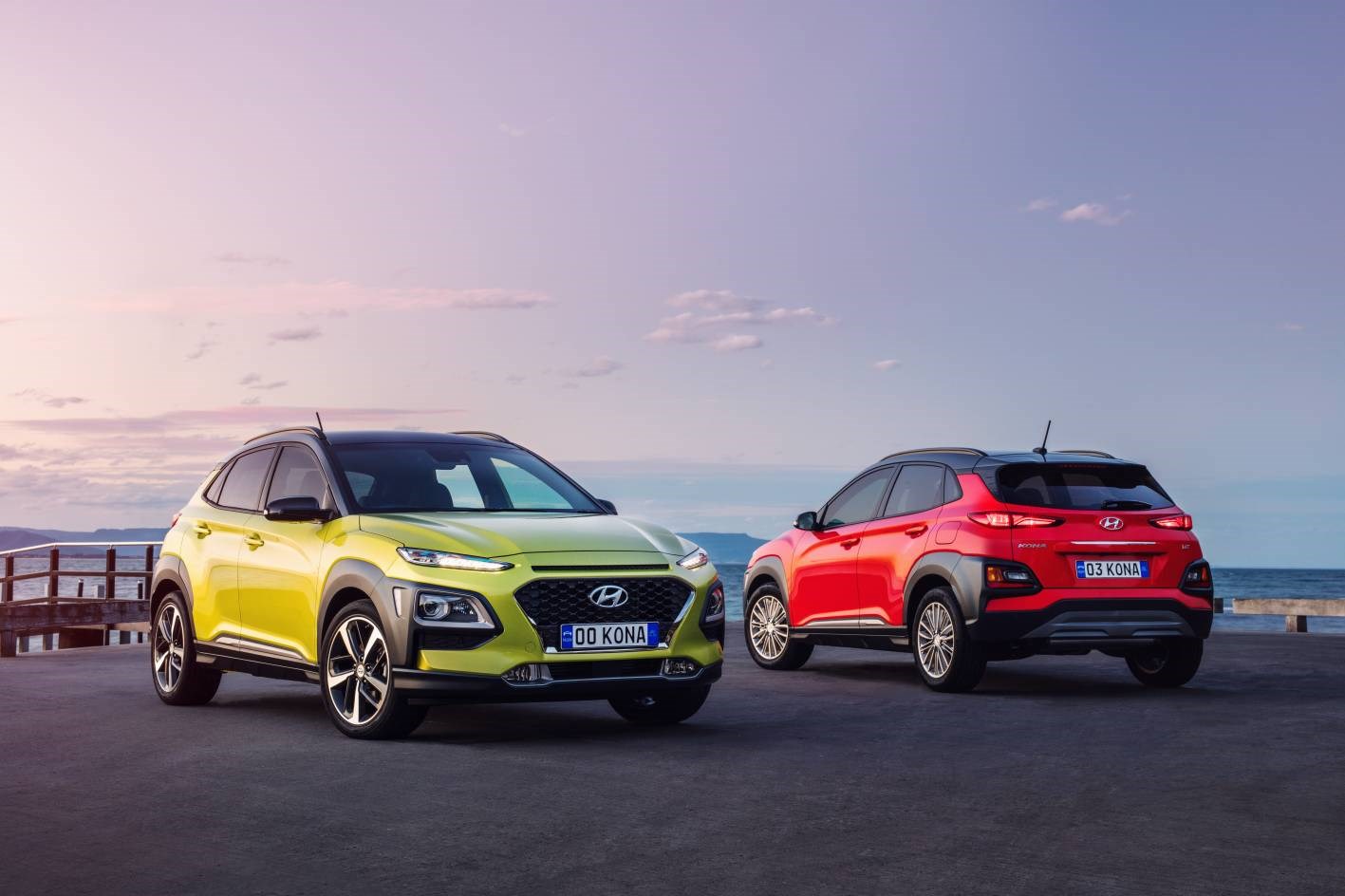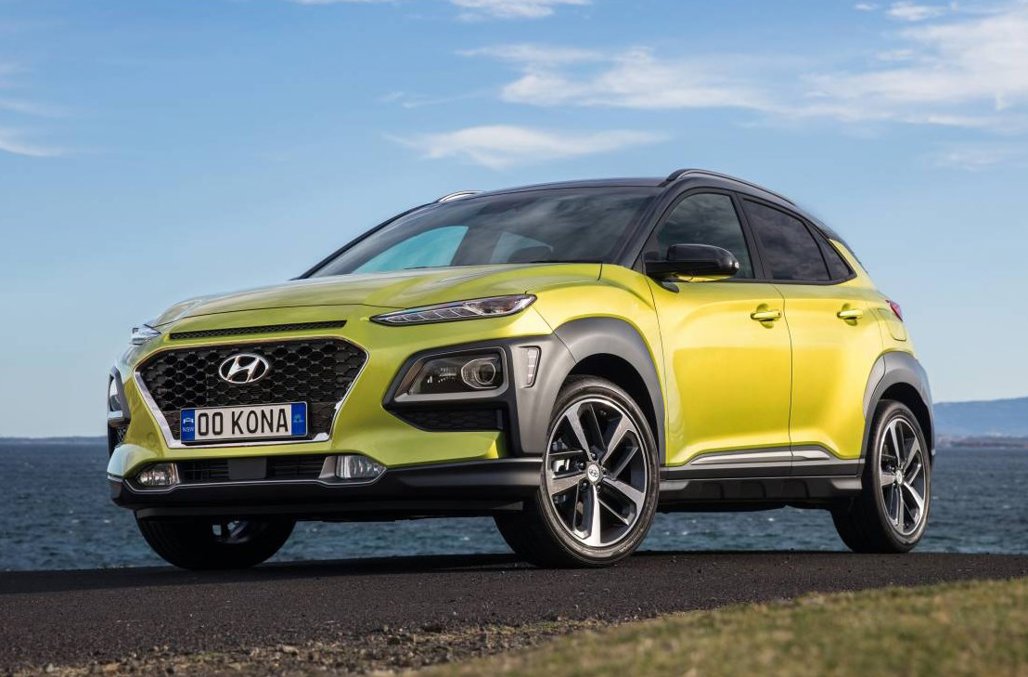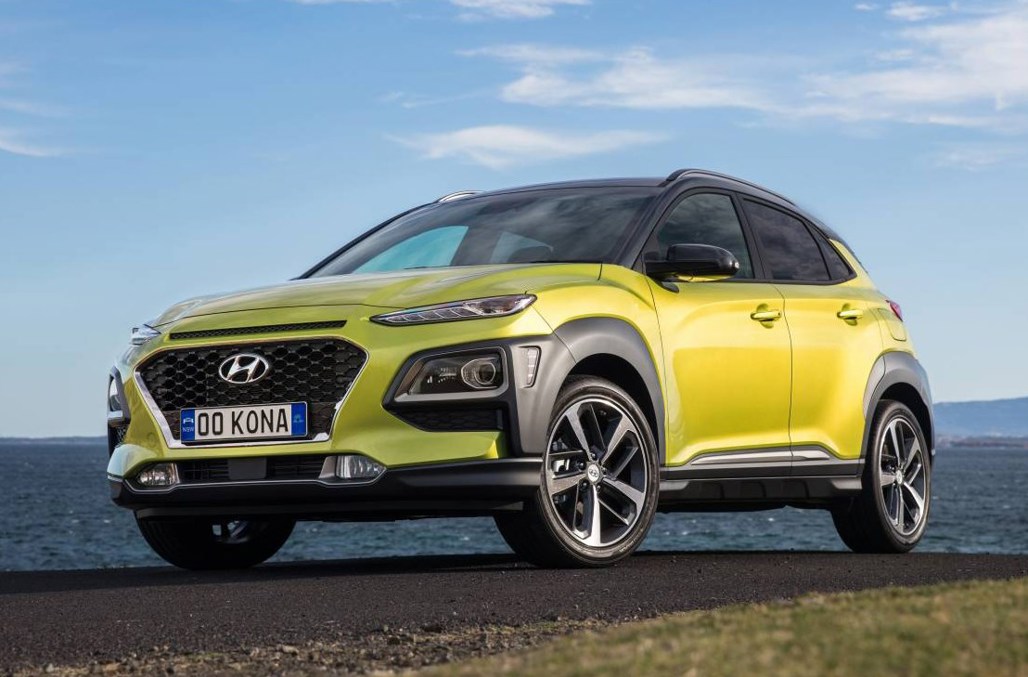Hyundai once dominated the compact SUV market with its popular i-35 models, but has been absent from the sector at a time when most manufacturers have been rushing in to catch the SUV boom.
Now the Korean marque finally has a new compact SUV in its showrooms — the Kona.
The design is somewhat polarising — although, like many models, it looks better on the road than in pictures.
It has a muscular-looking front, with a large Hyundai cascading grill in the centre, flanked by two thin headlamps. There are separate LED daytime running lights, and the cars sit on either 16-inch or 18-inch alloy wheels.

The corners and lower flanks of the Kona are accentuated by what the company describes as “armour” — which, in reality, is dark plastic cladding. It will not repel a heavy blow to the bodywork, but it does accentuate Kona’s muscular stance. It looks like a proper crossover vehicle with its slightly flared wheel arches, and the cladding sets off each corner well.
The Kona drives well, handles corners with confidence and is a comfortable vehicle over long distances.
We know that because the New Zealand launch involved a drive from Auckland Airport to the Westpac Stadium in the centre of Wellington, via the Chateau Tongariro.
During those hundreds of kilometres the Kona provided a comfortable and relaxing drive — proof of that was one passenger drifting off to sleep during part of the drive.
Hyundai New Zealand is aiming the Kona at what it describes as the “intrepid” buyer.
Hyundai New Zealand general manager Andy Sinclair admits the company is late to the booming compact SUV segment of the market, but says it is a case of “last to the party but best dressed”.
The Kona is a smart compact SUV targeted at those under 30, and those over 50, who in marketing terms place more importance on experiences rather than possessions. They are said to be intrepid and adventurous.
The Kona is available with either a 2-litre or 1.6 litre turbo engine. It is priced from $31,990 for the entry-level model through to the top-of-the-range all-wheel drive Elite model at $41,990. The 2-litre, front-wheel drive Elite model, with leather seats, electrically adjustable front seats and climate air conditioning, is $36,990 — the same price as lesser-spec 1.6-litre all-wheel drive model.
In the Hyundai model range the Kona sits just below the well-established Hyundai Tucson and Santa Fe SUVs.
The new model will go head-to-head with popular compact SUVs such as the Mazda CX3, the Mitsubishi ASX, the Honda CRV, the Nissan Juke and the Holden Trax.
Sinclair says that SUVs now make up 59 per cent of new vehicle sales in this country, and it is unlikely traditional sedans will regain supremacy.
The Kona is seen as an important model for Hyundai around the world, particularly in North America, where the brand has been languishing. In that part of the world, dealers believe the company has concentrated too much on developing the Genesis luxury sedan models rather than the more popular SUVs.
In markets where the Kona has already been introduced, it has been well received.
In New Zealand, the petrol-powered Kona models will be joined by an electric-powered version about the middle of next year.
The interior is smart, with a “floating” 7-inch touch screen in the centre of the dashboard, which is functional and elegant, and avoids complexity. However, there is no satellite navigation on New Zealand models. Instead Hyundai New Zealand has decided to go with the Android Auto and Apple Car Play options, something they say buyers here prefer.
That is fine, as long as there is access to a mobile phone signal.
Top-end models have wireless phone charging pads, something rare in this price range.
Models also have coloured stitching in the upholstery, and mood lighting that can be adjusted to suit the driver.
From a practical point of view the Kona provides 360 litres of boot space, or 1143 litres with the rear seats folded down. Loading is easy because the rear door runs down to the floor, providing a flat surface to slide in loads.
The four-wheel-drive models have advanced traction cornering control, and rear collision avoidance is fitted with other features such as Lane Assist and blind-spot collision warning systems, and a rear cross-traffic collision warning function.
Hyundai is offering the Auto Link smartphone app with the Kona, which enables drivers to access information and data from their vehicle.
The system provides an interface that joins the car’s computers with the user’s smartphone, and offers everything from vehicle diagnostics (including tyre pressure monitoring) and vehicle status to driving statistics.
Owners can use the system to monitor service intervals and schedule servicing or to request roadside assistance. The parking management function provides a parking timer and reminder, and helps locate the vehicle in large car parks.
The drive from Auckland to Wellington showed the 1.6 turbo all-wheel drive model to be the pick for someone who enjoys driving. Even after three hours at the wheel, the Kona is a pleasure to drive.
Hyundai Kona
Price: From $31,990
Pro: Nine colour choices, handles well and plenty of space
Con: No Satellite navigation, or manual option




